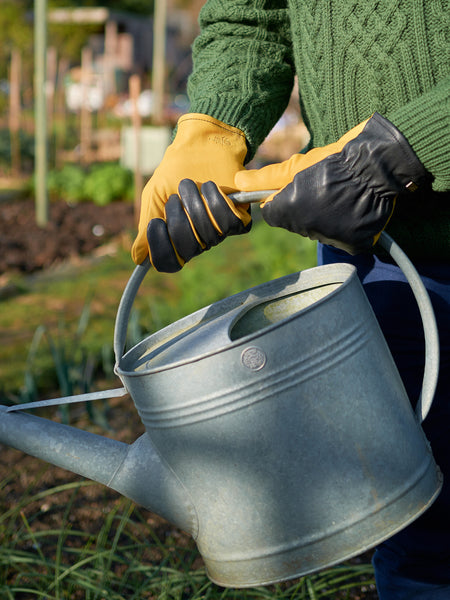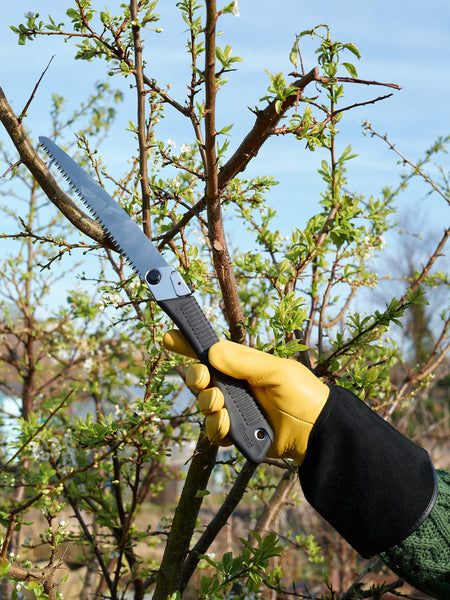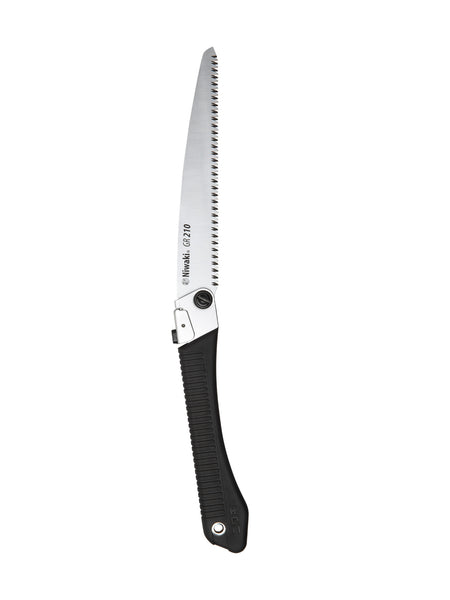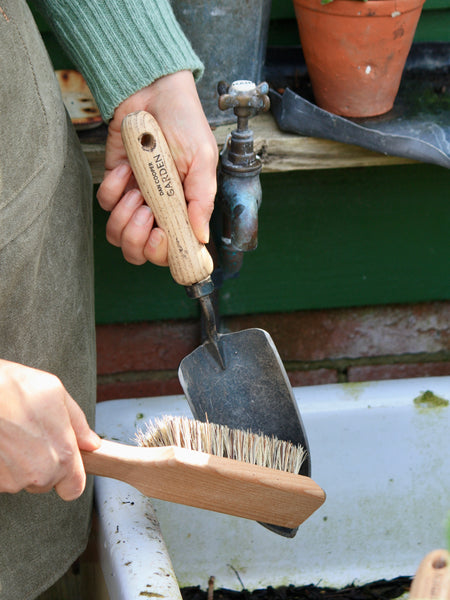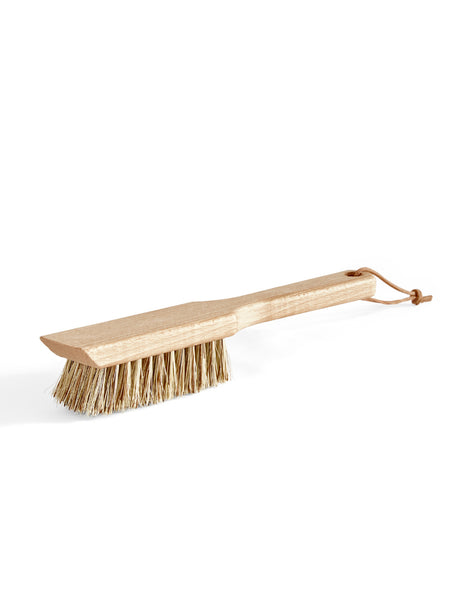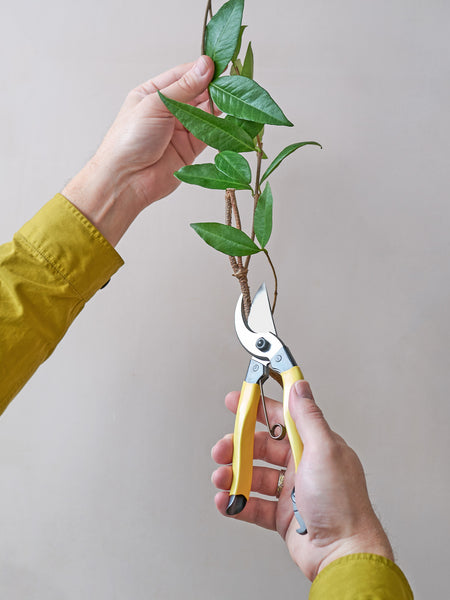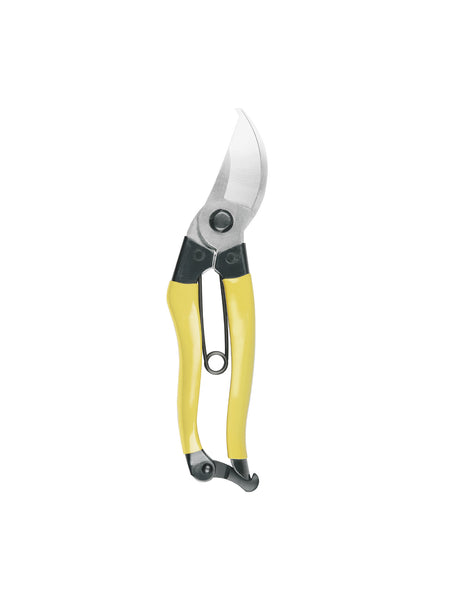Snow won’t harm most plants, but it can be damaging or even fatal for those accustomed to warmer climes or with delicate structures such as hedges and topiary. In this post, I will explain the measures you can take to protect your plants from snow damage before it falls and in the immediate aftermath, with tips on assessing their health and reviving them later.
When snow falls, it creates an insulating layer over our gardens, like a down quilt. Although it won’t be warm underneath, temperatures will hover steadily around freezing, and the snow will protect plants from exposure to drying winds and subzero air temperatures. Consequently, the parts of a plant above snow level are far more likely to suffer damage than those beneath.
Signs of snow damage include bent, split or broken branches, plants that have lifted out of the ground, and scorched or squishy flowers and foliage that begin turning brown or black after thawing. If leaves develop yellow, gold, orange, red or bronze tints, this will likely be a temporary response to cold weather, and they will revert to green in spring. Herbaceous and bulbous plants flattened by snow usually right themselves quickly, whilst woody plants may need intervention.

These hellebores have just emerged from beneath 10cm of snow. In a day or two they'll be upright again
Before Snow Falls
Think carefully before protecting a plant from snow damage; despite good intentions, you could do more harm than good. Most hardy plants are perfectly resilient and are safest left uncovered. However, as with most things, prevention is better than cure.
- Lift tender plants like cannas, dahlias and gingers and store them in a dry, frost-free shed, greenhouse or cellar. Move potted plants indoors or position them under a tree or near a wall for shelter.
- Apply a thick mulch around the base of any cold-sensitive plants that can’t be moved. 20cm depth should be sufficient.
- Use fleece to prevent small or delicate plants from being flattened, but make sure there’s a structure to hold it in place, preferably one that snow will slide off. Just laying fleece over the ground is unlikely to provide any helpful protection and may smother the things you’re trying to save.
- Use bee skeps, cloches or upturned pots to protect clumps of crocuses, miniature irises and primroses already in full bloom.
- Remove weak and overhanging branches from trees to reduce the risk of them breaking under the weight of accumulated snow.
- Support columnar evergreens with wire hoops so that heavy snow settling on top doesn’t cause the branches to splay out and split away from the main trunk.
- Surround topiary shapes and hedges with a hidden wire or wooden framework to prevent them from becoming misshapen. Snow protection has developed into an artform in Japan, where trees are often trained to make them look ancient and characterful.
- Wrap plants susceptible to wind scorching with fleece, especially bay trees and other evergreens.
- Water containers thoroughly. This might sound counterintuitive, but dehydrated plants are more vulnerable to cold damage, especially in exposed gardens. That’s because there’s less available moisture to replace water evaporating from the leaves, particularly if the ground is frozen.
- Lift pots onto pot feet so that excess water can drain away freely when the snow melts.

These agaves endured a covering of snow and went on to flourish thanks to excellent drainage.
Immediately After Snow Fall
- Don’t use salt to clear paths and drives. When the snow melts, salt will burn any foliage it comes into contact with and soak into the ground, creating conditions that most plants won’t appreciate. Grit or sand is a much better solution. Avoid piling shovelled snow against hedges or vulnerable shrubs such as hydrangeas.
- Gently knock snow off horizontal branches with a broom, paying attention to what it’s falling on! Rhododendrons and azaleas can be especially vulnerable to splitting apart, and while they’ll often regrow, a splayed look may not be what you’re looking for!
- Brush snow from the top of hedges, topiary, fruit cages and other fragile structures so they don’t collapse under the weight. Greenhouses and sheds should be robust enough; the snow will help insulate anything inside.
- Deal with obviously dangerous damage but leave any other tidying up or removal until long after the cold weather has passed. Even if a plant’s extremities are dead, they may still protect the lower portions from harm. Pruning immediately will only strain the plant and expose healthy tissue to the elements.

These calla lilies were turned to mush, but resprouted from the base in spring.
When Spring Arrives
- Repeated freezing and thawing can create enough pressure to expose deep cracks in the soil and push shallow-rooted plant roots out of the ground. If you see this has happened, attempt to lift, replant, or resettle the plant without further damaging the roots. Adding a slow-release fertiliser and mulching will help the plant recover. Larger trees and shrubs may need height reduction or short-term staking to stabilise them.
- Even if a plant looks as dead as a doornail, resist pruning or tidying plants until mid-summer before deciding on removal or replacement. Plants want to live, and although the weather has dealt them a blow, many will reshoot or regrow from the base once conditions improve - this may happen later in the year than you expect. Feed and weed around recovering plants, protecting the new growth from pests and diseases.
- If you’re sure a plant is a goner, see it as an opportunity to plant something new and exciting in its place. Some of the most outstanding gardens in the world have experienced devastating weather events and have come back stronger and more beautiful afterwards. If you’ve lost a plant you cherished, research whether there’s a hardier variety or replant it in a more sheltered location.
Do you have something to add? If so, I’d love to hear from you. Drop me a line at hello@dancoopergarden.com and I’ll share your hints and tips here.

